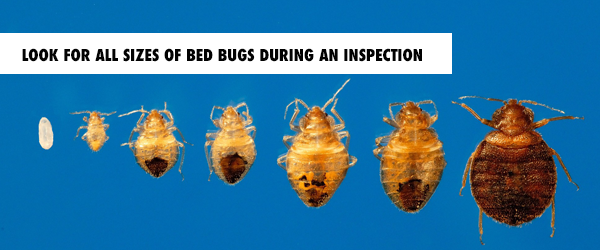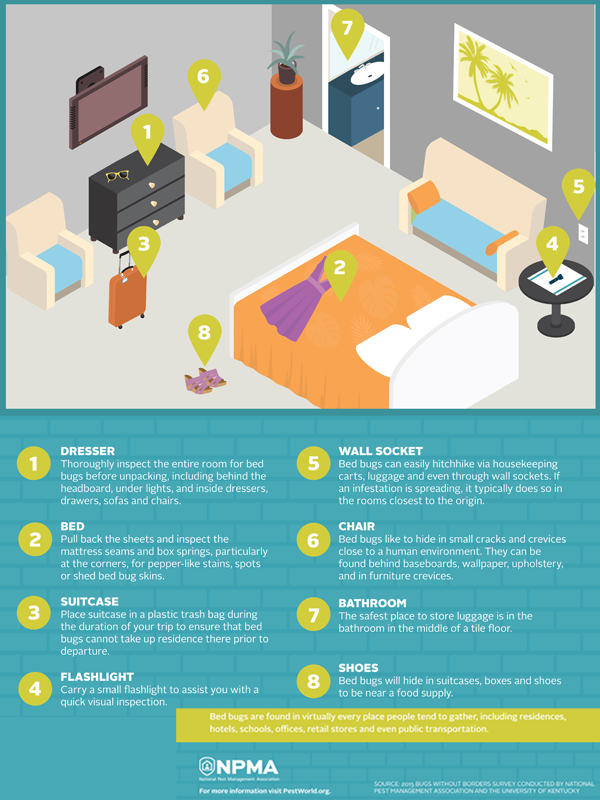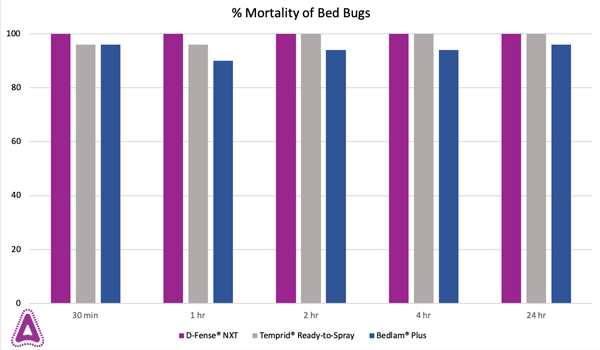"Bed bug season…” Is there such a thing? Bed bugs live throughout the year, but there is a particular time during each year when bed bug infestations become more common.
In normal years, bed bug “season” peaks in the months of August and September when most families have returned from their travels, and bugs have a chance to gain a foothold. Bed bug season normally begins at the end of spring each year and ends at the beginning of the month in November, coinciding with increased summer travel. Bed bugs do not reproduce faster this time of year, it simply takes time before people start to notice they’ve got a problem. This is mostly due to their cryptic nature and nocturnal activities.
The common bed bug, Cimex lectularius, has a long, well documented history of resistance to insecticides. Resistance is defined as “a heritable change in the sensitivity of a pest population that is reflected in the repeated failure of a product to achieve the expected level of control when used per the label recommendation for that pest species.” Resistance is more common in populations with a quick generation time, such as house flies, fruit flies, German cockroaches, and bed bugs. It is less common in insects with long generation times as well as social insects such as ants and termites.
How Bed Bugs Develop Resistance
Let’s take a minute to explore how insects, and specifically bed bugs, develop resistance to insecticides. As we know many PMPs find themselves in situations where their bed bug applications are having little to no effects on the population. Pests have several tools they use to overcome exposure to insecticides.
Metabolic detoxification by multistep enzyme systems is the most common method used to detoxify chemicals inside insect bodies. Resistant insects may quickly flush the pesticide out of the body or they are able to detoxify or destroy the toxin faster than susceptible insects by using internal enzyme systems to break down insecticides. Resistant strains often have more of these enzymes or they may work faster/better than within the susceptible strains. In addition to being more efficient, these enzyme systems also may work across many types of insecticides with different modes of action.
Another method insects, and specifically bed bugs, have been shown to use, is thickening of their outer exoskeleton. Several studies have shown a connection between a thicker cuticle and a decreased response to insecticides. These thicker outer layers may reduce absorption of the pesticide active ingredients into the insect body.
Behavioral resistance is a third type of resistance; this is when the pest changes its behavior to avoid being harmed by the pesticide application. This type of resistance is not believed to be caused by the same selection pressures as the first two types and is the most difficult type of resistance to anticipate in integrated pest management programs.
The final type of resistance is target site alteration. This type of resistance occurs when the target site where the pesticide binds in the insect's nervous system is altered or changed in some way, typically via a genetic change. Simply put, this method of resistance is similar to changing the locks on a house–the key will not work anymore.

Bed Bug Inspection Checklist
We, as an industry, have tried everything we can think of at them in our control efforts. We’ve applied every class of insecticide currently labeled, and used mechanical traps, heat, steam, cold, fumigation, IGRs, mattress covers, as well as natural control methods. Unfortunately for us, bed bugs continue to prevail as one of the most difficult pests to control.
When developing a control program for a customer, the first step is the inspection phase – we must determine the following:
For me personally, when performing bed bug inspections, I try to think of them like blood sucking German cockroaches. The bed (and or the person(s) that sleeps in the bed) is the “moisture” source we always focus on when inspecting for cockroaches and then we go out from there. Typically, in low level infestations, I find them less commonly on the mattress or mattress ticking, but more commonly in and under box springs and bed frames. I think this is due to the decreased amount of disturbance these areas have from cleaning and linen changing.
80/20 Rule
When inspecting, I always remember the 80/20 rule… I spend 80% of my time looking for 20% of the insects! Most of this 80% of time is spent looking for mated females. Due to the nature of how bed bugs mate, females typically leave the general population and “hide” in another area. I’ve found females 12-15’ away from the main population and where the food source slept.
When we begin to discuss control options, the first thing many people want to do is discard their belongings, including mattresses and box springs. This is not necessary. I recommend investing in a high-quality mattress and box spring encasement rather than replacing the whole kit and caboodle. These items make future inspections faster and easier. Plus, if treatment is not thorough, if the treatment fails, or new insects are brought in a new mattress, box spring, or furniture will just get infested anyway.

As we gear up for "normal" summer family vacation travel, combined with the increase in travel, the time is NOW too educate your customers about how to avoid bringing home more than memories and souvenirs. Above is an infographic created by NPMA, and is a great resource to share with your customers as they embark on their adventures.

Tips & Tricks: Pricing Out a Bed Bug Job
Be sure you are charging enough for the work you are performing, especially bed bug work. Your professional training, knowledge, skills and experience should demand top dollar. Here are some things to consider the next time you price a bed bug job:
Bed bug treatments are not an everyday job and shouldn’t be priced that way!
2 IGRs Are Better Than One - How to Kill Bed Bugs the right way
PMPs no longer need to purchase multiple products when treating for bed bugs. CSI offers a Pressurized Solution formulated with CSI’s Combination Chemistry® that is changing the game in pest control. Just what is Combination Chemistry ®? Combination Chemistry is formulating products with multiple active ingredients, with different modes of action, ultimately creating unique proprietary products for industry professionals like yourself to address pest problems.
D-Fense NXT boasts not one but three active ingredients; 0.20% Novaluron for lasting residual control, 0.06% Deltamethrin for a quick knockdown and 0.02% Pyriproxyfen as an insect growth regulator all rolled into one state-of-the-art aerosol.
D-Fense NXT is unique because it delivers multiple benefits. Only one product purchase is needed, rather than multiple products to carry in a vehicle. PMPs can purchase D-Fense NXT to achieve fast results and long-term control of troublesome bed bug and cockroach infestations, as well as many other listed pests.
Mortality of Bed Bugs after Direct Application
Mortality of Bed bugs, Cimex lectularius, Field Collected, after exposure to D-Fense NXT

Bedlam is a registered trademark of McLaughlin Gormley King Company
Temprid is a registered trademark of Bayer CropScience LP
Snell Scientifics, 2017.
Subscribe to our website and follow us on YouTube Facebook & Twitter for promotions, product launches, product info and much more!
Product Information
Bedlam® is a registered trademark of McLaughlin Gormley King Company